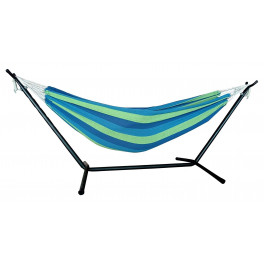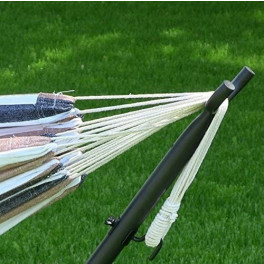Having recently relocated from a property with a “sprawling” suburban backyard to a miniscule inner-city lot, I had high hopes of creating a tiny backyard oasis with thick grass and a small urban garden. Little did I know that my yard wasn’t going to cooperate with this plan.
The first sign that my yard was going to give me trouble was the presence of moss. I have a lot of it everywhere.
Moss in your lawn can indicate one or more of the following conditions:
- The soil isn’t very healthy. It may have a high acidity level (low pH) or lower than normal amounts of nutrients.
- The soil is tightly compacted.
- The yard gets little sunlight and receives fairly heavy moisture amounts.
"How can I get rid of moss in my yard?" I wondered. Well, I quickly learned that to get rid of moss, you need to make your soil hospitable to something OTHER than the moss.
1. Control Water
First things first, to stop moss growth you must limit the water your soil receives. Of course, you can’t possibly stop those persistent spring rains or flash summer thunderstorms.
However, there are several ways to help offset and redistribute the water that ultimately pools in your yard, causing moss to grow.
Is your moss building up around downspouts or by the side of your home? The culprit may be your gutters. Give them a once-over to ensure they’re draining properly.
If you have built-in watering hoses or automatic irrigation, turn it off throughout the spring.
If you have water pooling in various locations, consider installing a simple french drain to move the water to a more desirable location.
The Takeaway: Dry out the area where your moss is growing.
2. Aerate
Moss thrives in tight, compacted soil that experiences minimal air flow. The minute you break up the soil with aeration, it opens up the possibilities of what can actually grow in that space.
If your moss problem is fairly manageable, run over all that fuzzy growth with a garden rake, making sure you get deep enough to disrupt the soil. Otherwise, rent a core aerator (or purchase a more affordable push aerator variety), which creates actual plug-like holes in your yard.
Then, plant grass seed, fertilize (more on this below) and cover with a thick layer of straw.
The Takeaway: Get some air flowing by aerating your lawn.
3. Fertilize
Moss likes not-so-ideal conditions, so why not make your soil “ideal?”
The first step here is to determine your soil quality to find out exactly what nutrients to use. I’ve sent soil samples my local agricultural extension here in Tennessee and at my old property in North Carolina. You can also use the USDA Web Soil Survey to get local (but not personalized) soil results. Then supplement as needed.
The Takeaway: Determine what nutrients are lacking and add as needed. Don’t hesitate to get an affordable (yet, invaluable) soil test.
4. Add Lime (To increase pH)
Is moss a sign of acidic soil? Absolutely! And if you got the soil test I talked about (see above), then there’s a good chance your test came back with a low pH, which means high acidity.

Photo by richsouthwales on Shutterstock
Calcium-based lime is a natural moss killer for lawns because it helps to increase the pH and lower the overall acidity levels. Ideally, you want pH “neutral” soil, which registers as between 6 or 7 with a simple pH test strip.
Keep in mind; you should always use proper personal protection equipment when handling chemicals such as lime.
The Takeaway: Increase the pH to a neutral level with garden lime.
5. Bust Out the ‘Good Stuff’ (Dish Soap and Vinegar)
So, you say you’re swimming in moss? I feel you! When all else fails and you still can’t get rid of this beautiful yet pesky ground cover, it’s time to bust out the good stuff.
Create this ultimate lawn moss killer using a combination of dish soap and vinegar. Dish soap is a great form of moss killing soap because it dries it out. That’s the same result you get when killing moss with vinegar.
In a spray bottle, mix 1 cup of dish soap with 1 ½ cups of white vinegar. Then, spray directly on top of the moss. After 15 minutes, go back and scrape the dried out moss using a hand trowel or small shovel.
Afterward, aerate, seed, and fertilize to grow grass, or plant whichever plants you’re interested in growing.
The Takeaway: Dish soap and vinegar help kill moss for good.
Lawn moss control is possible if you take all the proper steps. Limiting water, adding nutrients, balancing the pH, aerating, and treating with household materials can help you achieve a moss-free yard. Yippee!


























